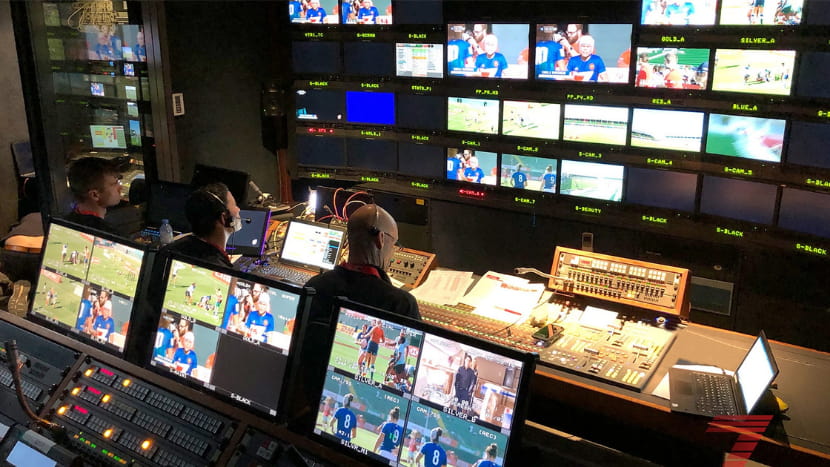
The pandemic created many problems for sports organizations. With fans banned from stands all around the globe, teams were left trying to figure out how to connect and engage with fans remotely. Although the situation is viewed as temporary, with no end to the global pandemic in sight, sports organizations, broadcasters, and media companies have had to reevaluate the ways they engage with sports fans.
Personalized Content
As more and more fans are opting to watch from their homes, production teams are capturing the action happening on the fields and courts, as well as producing more personalized and immersive experiences for the fans. In the next few years, you can expect to see a continuation in the evolution of how broadcasters implement different feeds and cover diverse points of view during a live broadcast. Multiple feeds and alternative camera angles create enhanced storytelling for a better viewing experience from the television.
Seamless 4k Broadcasting
The future is 4K! Also known as “Ultra-HD,” the 4K broadcasting features content with four times the number of pixel resolution as HDTV. Resolution comprises how densely the pixels are put together on the display. Individual pixels collect together to make up the image you see on the screen. The higher the pixel count the higher the resolution. Greater resolution results in a clearer, sharper image with deeper, bolder colors. As manufacturers continue to make 4K televisions more accessible to the masses, you will see a shift towards content being broadcasted in 4k.

5G Technology
There’s been a lot of buzz about how 5G will impact broadcasting in general. In particular, how 5G will impact sports broadcasting. One of the appeals to 5G is the ability of this innovative technology to make production and broadcasting more practical for broadcasters.
Besides improving remote production efficiency and sustainability, 5G is also set to enhance the fan experience by offering new and exciting ways of enjoying sports. With 5G technology bringing higher video quality and reduced latency, there are increased possibilities to deliver immersive and interactive user experiences inside and outside stadiums and sports arenas. From the traditional television experience to viewing from your smart device, 5G is poised to leave a lasting impression for sports broadcasting.
Virtual Reality
The vast majority of sports fans will never get the chance to score courtside seats or to post up directly behind home plate. The biggest barrier to entry for those kinds of experiences is the exorbitant amount of money fans typically have to pay for this up close and personal experience. However, virtual reality is the next best thing for a fraction of the cost.
Companies around the world are investing in innovative technologies to magically transport fans to a prime location inside a stadium or race track by throwing on a virtual reality headset. Capable of providing viewers with a clear 360° view of the action, we may see teams and content creators shifting toward live streaming sporting events via 5G and virtual reality.
Seven Production
Now more than ever, your viewers expect the highest quality 4k live streamed events. At Seven Production, our mobile production vehicles and live broadcasting services empower crews with the technology and solutions to produce precise, crisp 4K and HD content in real-time. Contact a member of our team to learn more about our mobile production vehicles and live streaming services.

